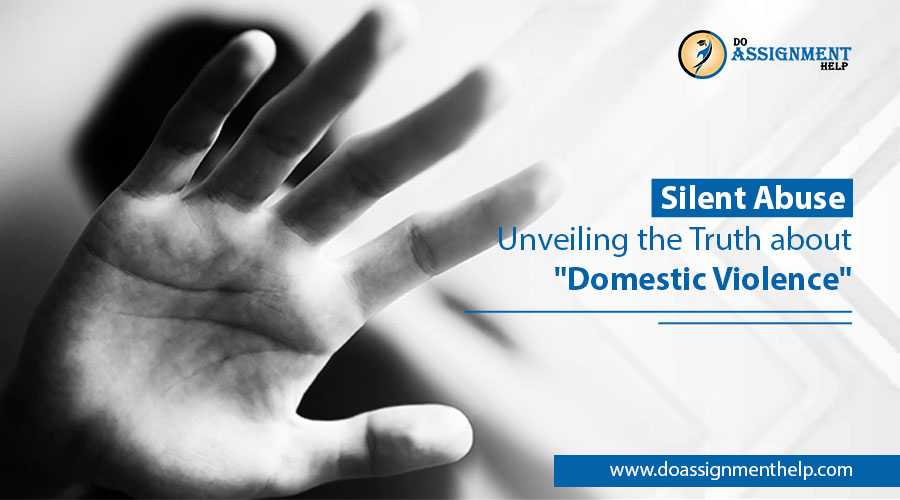Summary: Domestic violence is a pattern of controlling and coercive behavior that puts people’s lives at risk, affecting people of all ages, genders, sexual orientations, races, ethnicities, religions, social status, and immigration status. Women and men in the US are disproportionately affected by intimate partner violence, with over one-third of women (29%) and one-quarter of men (28.5%) being raped, hurt physically, or followed by a partner at some point in their lives. Domestic violence is characterized by physical aggression, controlling behavior, denial of physical needs, threat of physical abuse and indirect physical harm. Sexual abuse is using sex to hurt someone or make them have sex against their will, while emotional abuse is taking advantage of someone’s weakness, insecurity, or character.
“Domestic violence is not a private matter; it’s a crime against society.” – Jane Velez-Mitchell
Domestic violence is a serious issue that affects people of all ages, genders, races, ethnicities, religions, social status, and immigration status. It refers to a pattern of controlling and coercive behavior in which one person has power and control over the other person in a relationship. Domestic violence takes many forms, including physical, emotional, financial, stalking, harassing, and sexual abuse. In the United States, domestic violence affects millions of people every year. With intimate partner rape, physical harm, and stalking affecting 24 people on average every minute. This essay will provide an overview of what domestic violence is, the types of domestic violence, and the facts surrounding this issue.
Table of Contents
What is Domestic Violence?
Domestic Violence is a pattern of controlling and coercive behavior that puts people’s lives at risk. It affects people of all ages, genders, sexual orientations, races, ethnicities, religions, social status, and immigration status.
Violence is not love. It means that one person has power and control over the other person in a relationship.
There are many kinds of physical, emotional, financial, stalking, harassing, and sexual forms of domestic violence.
“Love shouldn’t hurt; if it hurts, it’s not love.” – Shannon L. Alder
Here are the facts that are related to domestic violence
- In the United States, an intimate partner rapes, beats, or stalks 24 people on average every minute. That’s more than 12 million women and men in a single year.
- In the US one-third of women (29%) and one-tenth of men (10%) face domestic violence like being raped, physically hurt, or stalked by a partner.
- About 14.8% of women and 4% of men in the US have been hurt by a partner’s rape, physical violence, or stalking.
- In the US, 1 in 4 women (24.3%) and 1 in 7 men (13.8%) aged 18 and up have been severely hurt by a romantic partner at some point in their lives.
- Over one-third of women (35.6%) and one-quarter of men (28.5%) in the US have been raped, hurt physically, or followed by a partner at some point in their lives.
- Almost half of all women and men in the US (48.4% and 48.8%, respectively) have been emotionally hurt by a partner at some point in their lives.
- Most of the time, the most intimate partner violence happens to women between the ages of 18 and 24 and 25 and 34.
- From 1994 to 2010, about four out of five people who were hurt by a partner were women.
- Most women who have been hurt by an intimate partner have been hurt by the same person before. This is true for 77% of women ages 18 to 24, 76% of women ages 25 to 34, and 81% of women ages 35 to 49.
Types of Domestic Violence
Control
Abusers use controlling behavior to keep their power over their victims. The main problem with domestic violence is controlling behavior, the belief that the controlling behavior is right, and the abuse that comes from it. It is often quiet, almost always sneaky, and hard to get rid of.
Physical Violence
The AMEND Workbook for Ending Violent Behavior says that physical abuse is any kind of physical aggression, denial of physical needs, indirect physical harm, or threat of physical abuse.
Hitting, kicking, biting, slapping, shaking, pushing, pulling, punching, choking, beating, scratching, pinching, pulling hair, stabbing, shooting, drowning, burning, hitting with an object, threatening with a weapon, or threatening to physically attack.
- Refusing to meet a person’s physical needs, such as not letting them sleep or eat, not giving them money, food, transportation, or help if they are sick or hurt, locking them in or out of the house, or not giving them or giving them less of what they need.
- Abusing, hurting, or threatening to hurt someone else, like a child, a pet, or something special.
- Forced physical restraint, being locked in a room or blocked from leaving, or being held down.
- During an argument, the abuser hit or kicked walls, doors, or other inanimate objects, threw things in anger, and damaged property.
- Taking the person as a hostage.
Sexual Abuse
Sexual abuse is using sex to hurt someone or making them have sex against their will. Even if you agreed to sexual activity in the past, that doesn’t mean you agree to it now. Sexual abuse can happen through both words and actions. This includes, but is not limited to, using force, coercion, guilt, manipulation, or not taking into account the victim’s desire to have sex. This could mean forcing the victim to have sex with other people, go through unwanted sexual experiences, or work as a prostitute.
Exploiting a victim who can’t make an informed choice about sexual activity because they are asleep, drunk, on drugs, disabled, too young, too old, or because they are afraid of or dependent on the perpetrator.
When someone laughs at or makes fun of someone else’s sexuality or body, says something offensive, insults them or calls them names because of their sexual preferences or behavior.
- Making any kind of unwanted contact with the victim, such as oral, anal, or vaginal penetration or touching any part of the victim’s body (by stroking, kissing, licking, sucking, or using objects).
- Being too jealous, leads to false accusations of cheating and controlling behavior to keep the victim from talking to the outside world.
- Having affairs with other people and then making fun of the victim by telling them about it.
- As a way to control the victim, not giving them sex.
Emotional Abuse & Intimidation
The AMEND Workbook for Ending Violent Behavior says that emotional abuse is any action that takes advantage of someone’s weakness, insecurity, or character. Such actions include constantly insulting, threatening, manipulating, brainwashing, or controlling another person in a way that hurts that person. This could mean, but isn’t limited to:
- Insulting or criticizing someone to make them feel bad about themselves. This includes being made fun of in public and being rejected or being threatened with rejection.
- Using direct or indirect threats or accusations with the goal of causing emotional or physical harm or loss. For example, they might say they are going to kill the victim, themselves, or both.
- Using words or actions that distort reality and make the victim feel confused and unsafe, like saying one thing and doing another, calling lies the truth, or not doing what they say they’re going to do. This can be done by denying that the abuse happened or by telling the victim that they are making it up. It could also involve things like hiding the victim’s keys and yelling at them when they lose them.
- Consistently ignoring, putting off, or ignoring what the victim wants or needs.
- Using actions, words, or gestures that hurt the victim’s sense of self-worth or self-esteem in order to humiliate them.
- Telling the victim they are crazy or can’t do anything.
- Forcing the person to drink or use drugs.
- Don’t let the victim practice their religion, cut them off from the religious community, or use religion as an excuse to hurt them.
- Using any kind of force or manipulation that takes away the victim’s power.
Isolation:
Isolation is a form of abuse that is often linked to controlling actions. It’s not a single act, but the result of many different kinds of abuse. By keeping the victim from seeing who they want to see, doing what they want to do, setting and meeting goals, and controlling how the victim thinks and feels, the perpetrator cuts the victim off from personal and public resources that could help them leave the relationship. By keeping the victim away from other people, the abuser keeps the victim from having contact with the outside world, which might not support the abuser’s ideas and beliefs.
People often start isolating the person they love by saying things like, “If you really loved me, you’d want to spend time with me instead of your family.” As it goes on, their isolation gets worse, making it harder or impossible for them to talk to anyone but the batterer. Eventually, the victim is left completely alone and without any inner or external resources to change their life.
Verbal Abuse:
Coercion, threats, and putting the blame on the victim are all forms of verbal abuse. Abusive language is used to insult, embarrass, or threaten the victim. This could mean, but isn’t limited to:
- Threatening to hurt or kill the victim, her family, pets, property, or reputation, or her children, family, or pets.
- Calling someone names (like “ugly,” “bitch,” “whore,” or “stupid”) is a way of telling them they’re not attractive or desirable.
- yelling, screaming, running around, scaring people, or refusing to talk
- Men will continue to be abusive as long as we as a culture accept the idea and right of male dominance. As long as our culture accepts and allows violence against women, men will keep doing it.
Economic Abuse:
Using the victim’s money to control him or she is a form of economic abuse. Some ways are:
- Controlling the family’s income and either not giving the victim money or making it very hard for them to get money from the family.
- The abuser can force the victim to lose their job. One can make them late for work, not give them a ride to work, or call them at work.
- Spending money on things that aren’t necessary (like food, rent, and utilities) (drugs, alcohol, hobbies.)
How to Get Rid of Domestic Violence
Domestic violence is a serious problem that needs to be dealt with from many different angles. Here are some things you can do to help stop domestic violence:
Increase awareness: One of the most important things to do is to make more people aware of domestic violence. People should know what it is, how to spot it, and where to get help.
Help: People who have been hurt by domestic violence need help from their community. This can be done by giving them emotional support, giving them money, or giving them a safe place to stay.
Educate perpetrators: Educate the people who cause domestic violence. They need to know that their actions are wrong and that there are consequences for them. Education and therapy can help them see how their actions hurt others and show them how to change.
Strengthen the laws: strong laws and policies can help stop domestic violence. This includes laws that make domestic violence a crime, protect the victims, and make sure the people who do it pay for what they do.
Promote gender equality: Gender inequality is often the cause of domestic violence. Promoting gender equality can help cut down on domestic violence by challenging harmful ideas and attitudes.
Support organizations: There are many groups that work to stop domestic violence, and you can help them. You can support these groups to help need and work to end domestic violence.
It’s important to keep in mind that ending domestic violence is a long-term goal. It needs people, communities, and governments to stay committed. We can make a world where domestic violence is no longer acceptable if we all work together.
Conclusion:
Domestic violence is a serious problem that has affected millions of people worldwide. It is important to recognize that violence is not love, and no one deserves to be hurt or controlled in a relationship. Domestic violence takes many forms, including physical, emotional, financial, stalking, harassing, and sexual abuse. It is important to raise awareness about domestic violence and provide resources to help survivors escape and heal from the trauma. By taking a stand against domestic violence, we can create a safer and more equitable society for all. And as an online Assignment help expert, if you think you need any type of expert help or guidance for writing your content then contact Doassignmenthelp for help.
 Santa Clara, CA 95050
Santa Clara, CA 95050 





